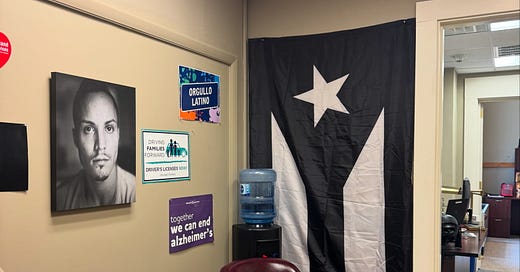Resistance & Independence: Behind the Black and White Puerto Rican Flag
A brief overview of the Black and White Puerto Rican Flag
The black and white Puerto Rican flag, known as la bandera en negro, has emerged as a potent symbol of resistance and resilience for many Puerto Ricans. Unlike the traditional red, white, and blue flag representing Puerto Rico’s identity as a U.S. territory, the black and white version flips the narrative. It speaks to a deep dissatisfaction with colonial status, systemic neglect, and economic hardship. Though visually stark, its meaning runs deep: it is flown as an act of mourning and protest, not disrespect.
The black and white flag gained prominence after the enactment of Puerto Rico Oversight, Management, and Economic Stability Act (PROMESA) in 2016. Passed by the U.S. Congress, PROMESA established a fiscal control board with sweeping authority over the island’s economy. Many Puerto Ricans saw this as a modern form of colonial rule, with decisions about schools, pensions, and infrastructure being made by an unelected board headquartered in Washington, D.C. The black flag became a visible marker of resistance to this fiscal intervention and a broader rejection of Puerto Rico’s colonial relationship with the United States.
Its first major appearance was in Old San Juan in 2016, when a group of activists painted a massive black and white Puerto Rican flag on a wall at Calle San José. That mural, created by the artist collective La Puerta de la Bandera, was a direct response to PROMESA and the resulting austerity measures. It quickly became an iconic rallying point for protests and community gatherings. The image spread across social media and eventually became a widespread symbol of protest, showing up on flags, murals, clothing, and social media.
Learn more: https://www.tiktok.com/t/ZP86oHT9p/
The traditional Puerto Rican flag already carries its own legacy of political tension.
Originally designed in 1895 by the Puerto Rican section of the Cuban Revolutionary Party in New York, it mirrored the Cuban flag and symbolized a shared struggle for independence from Spain. Ironically, for decades under U.S. rule, displaying the Puerto Rican flag was illegal under the Gag Law (Ley de la Mordaza) of 1948—a law that criminalized nationalist expression. In that context, the black and white version becomes a reclamation of suppressed political identity and a modern protest against continued disenfranchisement.
[Read More About the Flag: Puerto Ricans Love Their Flag but it was Once Illegal to Fly]
The choice of black and white colors is intentional and symbolic. Black represents mourning for the state of the island due to its economic hardship, population loss, and environmental degradation. Puerto Rico’s population has declined by over 12% since 2010, according to the U.S. Census Bureau, with many leaving due to job loss, lack of services, and hurricanes like María in 2017. White, in contrast, represents the hope for a just and liberated future. The stripped color also signals a rejection of the U.S. colonial color palette embedded in the original flag’s red, white, and blue.
Flying in many protests following Hurricane María, especially after the federal response was widely criticized for being too slow and inadequate, the flag has become synonymous with liberation. A study by George Washington University estimated that nearly 2,975 people died as a result of the hurricane and its aftermath, a figure far higher than official early reports. The flag became a rallying symbol for those demanding accountability and justice. Its use continued into the 2019 Ricky Renuncia protests that led to the resignation of Governor Ricardo Rosselló after leaked chats exposed corruption and misogyny.
Critics of the black and white flag sometimes argue that it’s divisive or disrespectful, especially to those who believe in statehood or U.S.-Puerto Rican unity. But supporters argue that it is a patriotic act of dissent. Flying the black flag doesn’t reject Puerto Rico but instead it affirms a version of it that is independent, proud, and unafraid to hold power accountable. It reflects a generation of Puerto Ricans both on the island and in the diaspora - who are reimagining what it means to love Puerto Rico.
Its growing presence outside the island, particularly in cities like New York, Chicago, and Orlando, shows how the diaspora has embraced the symbol as well. More than 5.8 million Puerto Ricans live in the continental U.S., according to the Pew Research Center, surpassing the 3.2 million who live on the island. For many, flying the black and white flag is a way to stay politically connected to the island and express solidarity with ongoing struggles.
Ultimately, the black and white Puerto Rican flag is more than a political statement: it is an evolving symbol of identity, sorrow, pride, and defiance. Whether it flutters from a San Juan balcony or is painted on a Brooklyn mural, it reminds the world that Puerto Rico’s story is far from over. It is a call to remember, to resist, and to reimagine a just future for an island that refuses to be forgotten.
I’d love to hear from you….





Thank you for your wonderful articles. I have been a Spanish teacher for 32 years. I have both a Bachelor's degree and Master's degree in Spanish, and I had never known about the Ley de Mordaza in Puerto Rico. I learn so much from reading your articles. They help me embed social justice issues into my lessons for students. ¡Que Dios le bendiga!